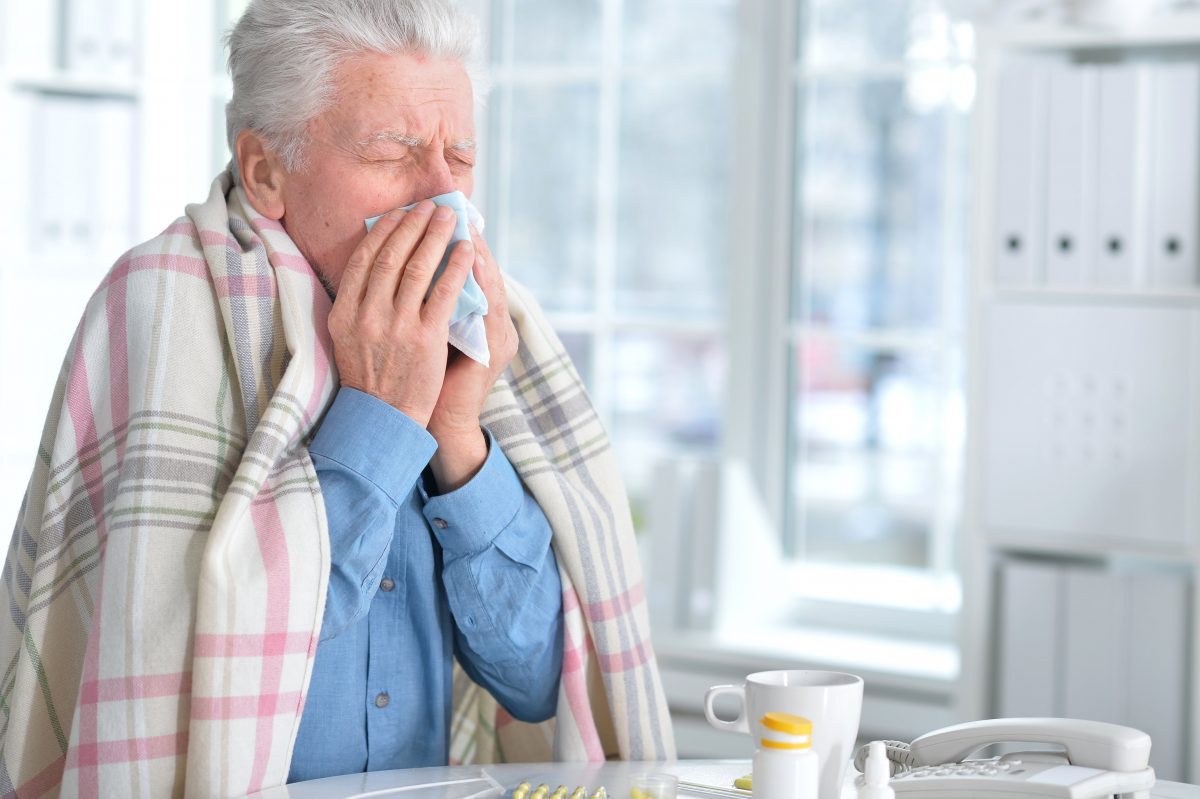Though the winter solstice isn’t until December 21st, many states have already begun their descent into winter, which includes colder weather, shorter days, and the spread of illnesses such as influenza. While there are no official dates that signify the beginning and end of “flu season”, CDC data has shown that influenza cases start to increase in October, with peaks in December and February. Influenza is never a pleasant experience, and research so far is predicting a particularly nasty 2017-2018 influenza season, with the A(H3N2) virus that caused trouble in Australia earlier this year making its rounds in the United States, and the vaccine only having a 10% effectiveness rate against said strain.
Influenza is unpleasant for everyone and has the potential to be fatal for anyone (in a sad recent case, a 20-year-old Arizona woman recently passed away as the result of flu-turned-pneumonia), but senior citizens and nursing home residents are particularly susceptible to the virus. Older individuals and those with other health problems have weakened immune systems that make contracting the virus more of a likelihood, and it is more dangerous for them to have the virus: during outbreaks, between 20 and 30 percent of residents are affected on average, and more than 5 percent of influenza cases among nursing home patients are fatal.
So, how is it introduced to a nursing home, and how does it spread? The virus can be introduced by new patients, staff members, or outside visitors, and once it’s inside a facility, it can be spread through contact with an infected individual (directly or indirectly), contact with infected respiratory fluid released through coughs or sneezes, or the inhalation of airborne particles. Because nursing homes have a large number of residents kept in relatively close quarters, one infected person can easily spread the virus throughout the facility’s population. The winter brings an additional risk level because poor weather often leads to facility doors and windows being kept closed, which only serves to keep the virus contained within the facility.
There are a number of ways that facilities can protect their patients from the virus before and during an outbreak:
- Vaccinations are perhaps the most important step in preventing influenza. Residents and employees should be vaccinated, and visitors should also be encouraged to be up-to-date on their vaccines. In addition, during the off-season, all vaccines should be coded to prepare for the next flu season and possible new strains.
- While the cold winter weather makes this difficult, increasing airflow throughout the facility can ensure that residents are not constantly breathing recycled air, which would greatly increase the spread of any virus present in the nursing home.
- All facilities should uphold hygiene standards, particularly during this season. All residents, employees, and visitors should be reminded to frequently wash their hands, and the facility should be sanitized on a regular basis.
About Caitlin Morgan
Caitlin Morgan specializes in insuring assisted living facilities and nursing homes and can assist you in providing insurance and risk management services for this niche market. Give us a call to learn more about our programs at 317.575.4454.


